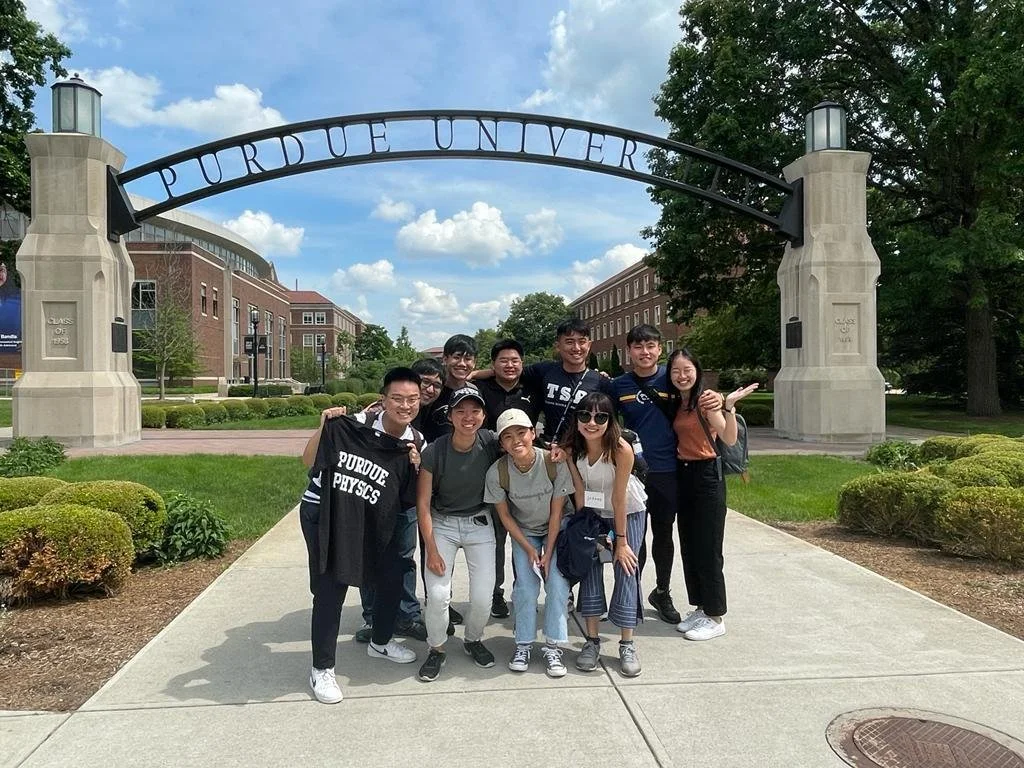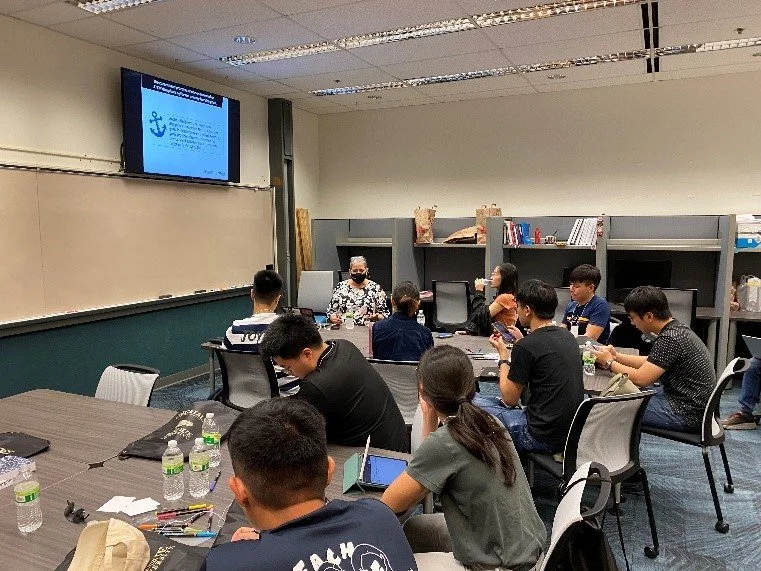eSTEM Learning Journey to Purdue University (30 May – 3 June 2022)
With the facilitation of Professor Lynn Bryan of Purdue University and Associate Professor Tan Aik Ling of NIE, a team of 10 NIE student teachers and 1 faculty, Assistant Professor Park Joonhyeong, embarked on a Learning Journey to Purdue University to understand how STEM education is carried out in the United States and to compare STEM education in Singapore and the United States.
The Learning Journey was hosted by the Center for Advancing the Teaching and Learning of STEM (CATALYST), an interdisciplinary research-oriented center in Purdue University. Its focus is on building and supporting a community of educational professionals who are dedicated to advancing K-12 STEM (science, technology, engineering, and mathematics) teaching and learning.
The student-teacher team from NIE eSTEM at Purdue University.
Sharing on Integrated STEM Education
We were introduced to the 5 key characteristics of an Integrated STEM education inspired by the Next Generation Science Standards. An integrated STEM curriculum should include an anchor discipline, an integrator (the problem), and students must be able to make justifications for their design supported by background information by data. Students should display 21st century skills such as teamwork and communication, and the project must be based on a real-world and authentic problem.
Sharing by Professor Lynn Bryan, Director of CATALYST Centre.
Visit to the EPICS Centre
We had the privilege of visiting the EPICS (Engineering Projects in Service Learning) Center at Purdue University. Dr. William Oakes, Director of the EPICS Program and founding faculty member of the School of Engineering Education, shared about the heart of a design programme that is anchored on significant service to the community while learning. Purdue students get to partner with the local non-profit community to provide technology solutions to real and authentic problems faced by the community.
Some of the prototypes that we witnessed were soft toys designed for children with special needs, a crop harvester for agricultural farmers, and a race car for children or adults with mobility needs. It was heart-warming to see the potential impact and difference STEM can make in the community, as it empowers beneficiaries to do what they previously were not able to.
Left: Student teachers at the EPICS centre.
Right: Sharing on prototypes created by Purdue students.
Left: Sharing on prototypes created by Purdue students.
Right: The EPICS Design Process involves redesigning, often a non-linear sequence.
Hands-on STEM Design Activities
After gaining a better understanding of integrated STEM, we had a chance to engage in three hands-on activities. The first was the Indiana Wildlife Rehabilitation Design Challenge, where we created a model of an animal rehabilitation enclosure that provided basic needs for our organism while limiting human exposure. The second was to design a model of an abiotic water filtration system to ensure that water exiting the filter would be safe to enter the Wabash River in the city of West Lafayette. Lastly, in our groups, we designed models for different challenges, such as a tower to hold up books, a waterwheel that can make the most rotations, and a material that can clean up an oil spill.
Left: Building of an enclosure for the Indiana Bat.
Right: An enclosure for the three-lined skink using materials from the park.
Left: Eugene shared the thinking behind his group’s water filtration system with Dr. Bill Walker, who facilitated this activity.
Right: The original colour of the unfiltered water before being poured into the filter.
Left: Tower made of only note cards and tape.
Right: Student teachers attempting to clean an oil spill.
Continuing Reflection
As a team, we engaged in daily reflections at the end of each day to continue the practice of being inquisitive and reflective educators. We would share our highlights of each day and how we can improve the activities as well as tailor it to the Singapore context, given our unique problems of small land size, ageing population, and lack of food security.
We were immensely grateful for this opportunity to learn beyond borders and hope to apply the insightful learnings to inspire the next generation of science students in the journey of STEM!
Daily reflections and debrief led by student teachers.








